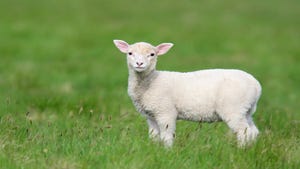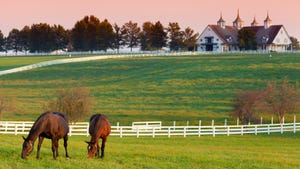March 10, 2023

People often shy away from planting native species because of their tendency to spread. But not all native plants are creepers.
Remember the saying “right plant, right place”? Well, there is a place on the farmstead for almost all plants, including those that wander.
Take ostrich fern, for instance. It has a sneaky way of spreading out through its long underground roots called rhizomes. They travel far and wide until they find a gap in which to pop up.
Instead of cutting it out, consider adding to the ostrich fern and creating a unique native bed. In areas such as the woodlands, add to it palm, hop, bur and ravens-foot sedges. Or consider American beakgrain, river oats, Virginia knotweed, wild geranium, Jacob’s ladder, Virginia bluebells, celandine poppy and golden groundsel. Combined, they create a naturalistic planting, vibrant with color and texture variation.
Here are three other aggressive native plants that may work on your farm:
1. Horsetail. Known as common scouring rush, it is a spreading, reed-like perennial that can grow 3 feet tall. It primarily likes wet locations. The evergreen stems are cylindrical, jointed, hollow and usually unbranched. The tiny leaves are joined together around the stem, forming a narrow black-green band or sheath at each joint. It does not produce flowers or seeds.

HOLLOW HELP: Horsetail grows along many trails in Missouri. It does well in wet soils. (joSon/Getty Images)
2. Common milkweed. This native plant gets a bad rap because it increases in a landscape through two transportation methods — below ground by rhizomes and through the air by seed. It is one that likes sunny areas. Common milkweed works well on difficult-to-mow slopes. When combined with other aggressive sun-loving plants such as switchgrass, sweet coneflower, curlytop ironweed and New England aster, it fills space quickly and persists long term.

FOR THE BUGS: Common milkweed is nature's mega-food market for insects, according to the U.S. Forest Service. More than 450 insects feed on some portion of the plant. Flies, beetles, ants, bees, wasps and butterflies are attracted to the nectar-laden flowers. (Robert Winkler/Getty Images)
3. Wild strawberry. This is sometimes referred to as a green or living mulch plant. It is a filler native species that works well between perennials and grasses in gardens, which is typically how it grows in a wild prairie. Plant wild strawberry a couple of years after an initial planting of desired plants because it is aggressive and may out-compete newly planted purple coneflower, wild indigo, Culver’s root, prairie coreopsis, rose turtlehead, butterfly milkweed and others. Try it instead of applying wood or leaf mulch every year.

GREEN EATS: Western Indians prepared a tea from the green leaves of the wild strawberry plant. Its leaves have three leaflets, and its flower has five white petals. The red fruit is that of a typical strawberry, only much smaller in size. (Pierre Longnus/Getty Images)
There are many native plants, plant combinations and planting situations yet to be discovered. Consider planting a few on your farm.
Woodbury was the horticulturist at Shaw Nature Reserve for 30 years and continues contract work on native landscaping education. He operates Cacalia: Native Garden Design and Wilding.
About the Author(s)
You May Also Like




